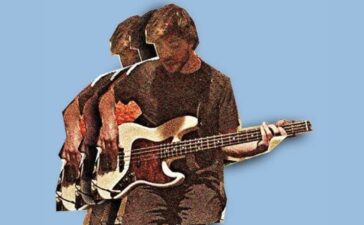Pino Palladino, a highly revered bassist, has made a significant impact in the world of music over the past few decades. Known for his deep grooves and versatile playing style, Palladino has collaborated with an impressive array of artists across various genres. This article delves into some of his most memorable bass lines and the techniques that define his unique sound.
Early Life and Musical Influences
Born on October 17, 1957, in Cardiff, Wales, Pino Palladino was immersed in music from a young age. He began playing the bass guitar in his teens, drawing inspiration from a variety of genres, including rock, jazz, and soul. Palladino’s early influences included legendary bassists such as James Jamerson and Jaco Pastorius, who shaped his musical approach and technique.
Signature Bass Lines
- “Wherever I Lay My Hat (That’s My Home)” by Paul Young (1983)
Palladino’s contribution to this hit song is notable for its rhythmic complexity and melodic flair. The bass line serves as the backbone of the track, perfectly complementing Young’s soulful vocals. The use of slides and syncopation showcases Palladino’s ability to blend groove with melody, creating a memorable listening experience. - “I Don’t Wanna Know” by Fleetwood Mac (1982)
Although originally recorded by Fleetwood Mac, Palladino’s work on the live performances brought a new energy to this classic. His dynamic playing adds depth to the arrangement, allowing the rhythm to drive the song while still leaving room for expressive fills. - “Breathe” by The Who (1985)
Palladino joined The Who in the mid-1980s, and his contribution to “Breathe” is a testament to his ability to adapt to different musical styles. The bass line is characterized by its melodic movement and rhythmic stability, grounding the song while allowing the other instruments to soar. - “Neon” by John Mayer (2012)
In this track, Palladino’s bass line is both intricate and fluid, showcasing his ability to play in a more modern context while retaining his signature groove. The interplay between the bass and Mayer’s guitar creates a rich tapestry of sound, highlighting Palladino’s role as a crucial component of the band.
Techniques and Style
Palladino is known for his use of fretless bass, which contributes to his distinctive sound. This technique allows for smoother transitions between notes and a unique tonal quality. His mastery of various techniques, including harmonics, slides, and percussive playing, enhances the expressiveness of his lines. Additionally, Palladino’s ability to seamlessly blend various genres—from rock and pop to jazz and R&B—makes him a sought-after collaborator.
Collaborations and Impact
Throughout his career, Palladino has worked with an extensive list of artists, including Eric Clapton, D’Angelo, and Adele. His adaptability and musical intuition have earned him respect and admiration within the industry. Not only has he contributed to countless recordings, but his live performances are also legendary, often stealing the spotlight with his infectious energy and rhythmic prowess.
Conclusion
Pino Palladino’s contributions to music are invaluable, as his bass lines have not only shaped the sound of the artists he has worked with but have also influenced countless musicians around the world. His ability to fuse technical skill with deep musicality continues to resonate in the industry today. As he continues to perform and record, fans can look forward to more innovative lines from this extraordinary bassist.
In the world of bass guitar, Pino Palladino stands as a true icon, whose work is a testament to the power of rhythm and melody in music.









